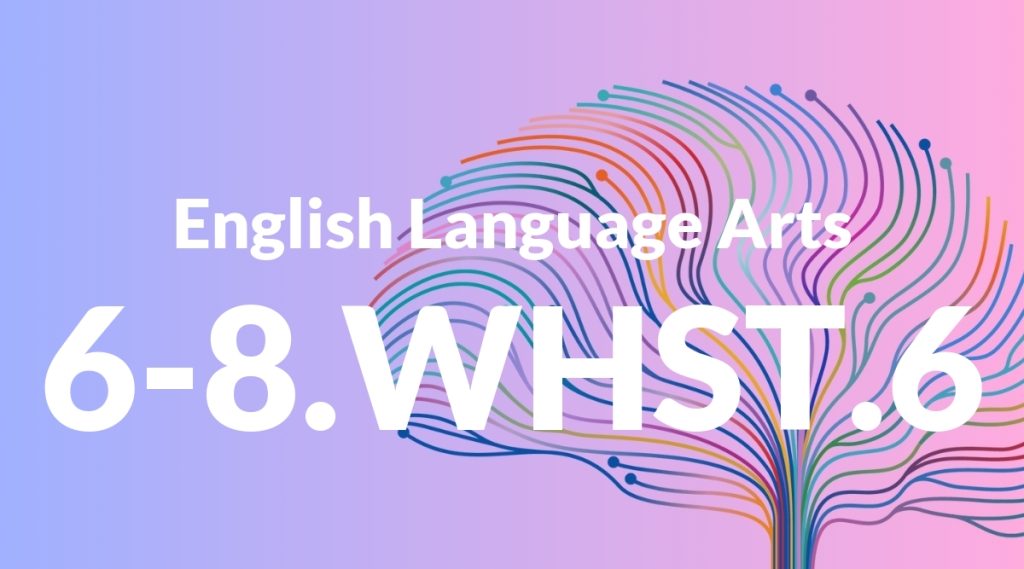Standard: 6-8.WHST.6 – Use technology, including the Internet, to produce and publish writing and present the relationships between information and ideas clearly and efficiently.
Grade level: Grade 6-8
Subject: English Language Arts
Domain: Writing: History, Science & Technical Subjects
Teacher Overview
This standard emphasizes the importance of integrating technology into writing tasks. It encourages students to use digital tools not only for producing and publishing their work but also for clearly presenting the relationships between information and ideas. Mastery of this standard is crucial as it prepares students for the digital demands of higher education and the modern workplace. Students should be comfortable using basic word processing software, understand how to perform online searches, and have a grasp of keyboarding skills.
After mastering this standard, students will be able to effectively use technology to enhance their writing, conduct thorough research, and present their findings in a clear and organized manner. They will also be better prepared to navigate and evaluate the vast amount of information available online.
Common Misconception 1
Some students might think that using technology for writing is limited to just typing their essays. This view is narrow and overlooks the wide range of digital tools available for research, collaboration, and presentation.
Intervention 1
Engage students in projects that require them to use different types of technology, such as creating a blog, developing a multimedia presentation, or collaborating on a shared document. This will help them see the broader applications of technology in writing.
Common Misconception 2
Another common misconception is that all information found on the internet is reliable. This can lead to the use of inaccurate or biased sources in their work.
Intervention 2
Teach students how to critically evaluate online sources by checking the author’s credentials, the publication date, and the evidence provided. Encourage them to cross-check information with multiple sources to ensure accuracy.
Prerequisite Knowledge
Students should have basic keyboarding skills, familiarity with word processing software, and a foundational understanding of how to conduct online research.
Subsequent Knowledge
Students will develop advanced research skills, the ability to critically evaluate online sources, and proficiency in using various digital tools for collaboration and publication.
Instructional Activities
- Create a class blog where students can publish their writing on historical or scientific topics.
- Assign a research project where students must use online databases and digital tools to gather and present information.
- Have students collaborate on a shared document to write a technical report.
- Develop multimedia presentations that integrate text, images, and videos to explain a scientific concept.
- Organize a virtual peer review session where students can give and receive feedback on their digital publications.




